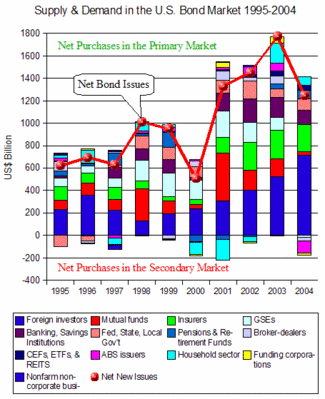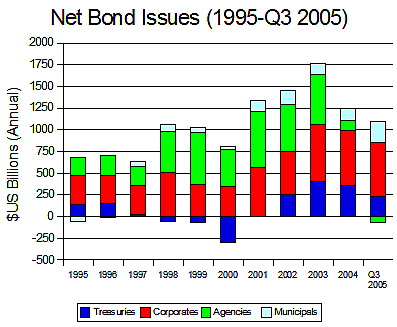U.S. Bond Demand Has Exceeded Supply for a Decade
by John Schroy filed under Treasuries, Open Market, Agencies, Mortgages, Municipals, Corporate Bonds, War, Market Players
Over the decade, 1995-2004, the demand for U.S. bonds of all types has surpassed new bond issues in eight of the last ten years. This is the reason that bond prices have held firm, even in 2003, when net new issues reached almost $1.8 trillion.
According the Federal Reserve Flow of Funds Accounts, six groups made up 90% of net bond buying over the decade:
Foreign Investors...................................32.7%
Mutual Funds........................................14.7%
Insurance Companies.................................13.4%
Government Sponsored Enterprises....................12.9%
Banks, Savings Institutions.........................10.1%
Federal, State, & Local Governments...............6.2%
The graph shows the breakdown of net bond buyers over the decade (the colored bars), against the supply of new bonds (the red line.)
As the graph indicates, only in 1998 and 2003 did bond supply catch up with demand, represented on the graph by the years in which the red buttons are at the top of the bars.
In most years, buyers had to go to the secondary market to get all the bonds they wanted.
(The bars on the graph that extend below zero can be interpreted as bonds acquired in the secondary market. See Flow of Funds Accounts Tables: F209, F210, F211, F212. )
 Supply & Demand: US Bonds
|
||



